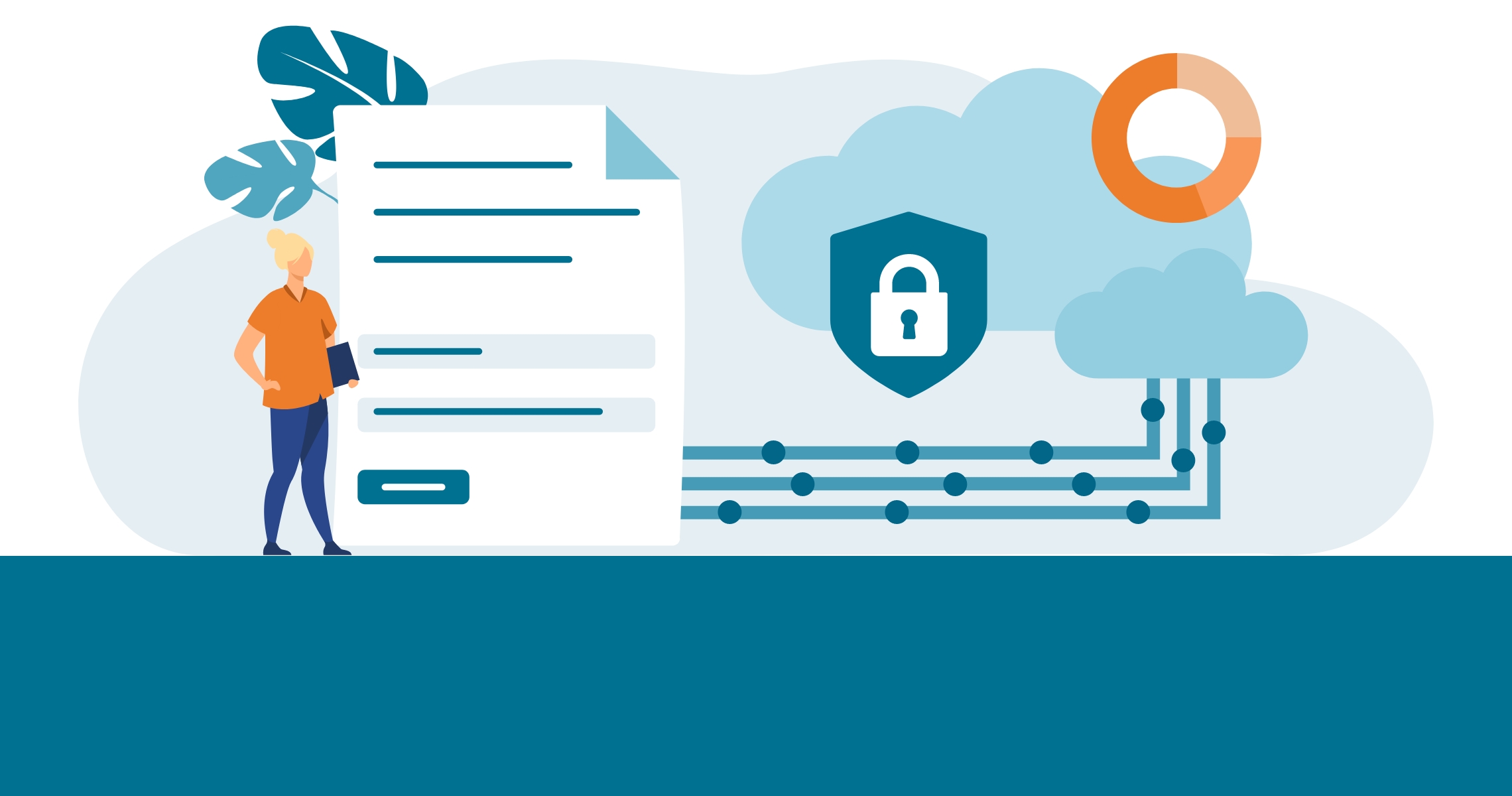An Introduction to E-forms
E-forms are an efficient, cheap and simple way to collect information, both internally and externally.
With everyone trying to save paper, e-forms are perfect for streamlining business processes while reducing your carbon footprint. But how do they work? And more importantly, how can you put them to work? Read on to find out.
This blog is adapted from a recent webinar, which you can view on YouTube here.
What are e-forms?
E-forms are electronic forms that gather data through user entries. They’re versatile, dynamic and mobile-friendly, making them perfect for all kinds of business processes. You can easily configure e-forms using a drag and drop e-form builder. And you can customise them using HTML, CSS or JavaScript.
Getting started with basic e-forms is easy. You can then increase their complexity to suit more difficult data-collection tasks. So, as your information collection needs grow, your e-forms will too.
With software like Therefore, e-forms are available for both internal and external users. This means you can use them for collecting internal data, such as:
- Timesheets
- Study leave requests
- Pregnancy risk assessments
You can also use them for collecting data outside your company, from people without a Therefore account, including:
- Customer feedback
- Job applications
- Contact requests
The information from a completed form is then saved by the platform. With Therefore, you can also link the e-form to an automated workflow. For example, with an e-form for requesting annual leave, the workflow routes the information to the right managers to approve or reject. This manages the data with complete accuracy and traceability. It also increases efficiency and productivity.
E-forms offer wide-ranging possibilities, so there’s a use case for every business out there.
What are the benefits of using e-forms?
E-forms aren’t just intuitive, convenient and great for cutting down on your paper usage. They have a host of other benefits:
- Cost savings. Using e-forms cuts down on processing and storage costs by minimising your paper usage. And e-forms come free with Therefore.
- Communication. With e-forms you can easily reach your audience and collect accurate information.
- Customisation. E-forms offer endless customisation options. You can change the look and feel of your online forms to match your company branding, edit the fonts and colours, as well as customise question types and responses.
- Security. E-forms are as secure as you need them to be. You can restrict your e-forms for use only by authorised users, or you can open your e-forms to the wider public.
- Collaboration. Workflows allow you to seamlessly pass forms from person to person.
- Accuracy. Look ups and masking in e-forms mean that mistakes can't be made.
So those are the benefits, but how do you use e-forms in a real-world scenario?
Using e-forms to streamline processes
So how can you use e-forms to optimise your internal processes?
In June 2021, Datatron helped the Northumbria NHS Trust to implement Therefore e-forms into their HR case file system.
With this in place, they then created a digital pregnancy risk assessment e-form. This process was originally done on paper in the presence of the employee. The disadvantages of this were:
- Organisational difficulties. Paper files are easy to lose, so information from previous risk assessments were not always retained.
- Lack of standardisation. Managers would fill out assessments in different ways, creating inconsistencies.
- No reminders. Managers must conduct risk assessments regularly, and so using paper files meant they were often missed.
To remedy these issues, Datatron created an electronic process to record the outcome of the assessment. The e-form was then linked to the original HR case file system, ensuring all information gathered from the risk assessment was in the employee’s file.
With the new e-form, the risk assessment benefits from:
- Standardised assessments. The e-forms follow a set structure, meaning that managers must input data in the same way each time. This ensures the gathered information is consistent.
- Assessment traceability. Managers and the employee can access the assessment information via a link. This saves PDF’s going back and forth in emails. Processing categories also harvest information and pass it on from form to form, so everything is up to date.
- Monitoring options. With all the information in one place, managers can monitor the risk assessment process from a holistic viewpoint.
- Actionable reminders. Ongoing risk assessments go into a workflow using Therefore’s Solution Designer. This sends out automatic notifications for follow-up interviews. It keeps managers updated with reminders of upcoming assessments.
Datatron provided continuous support and consultation throughout the process. They explained to employees how to use the e-forms and the Therefore platform, helping users adapt to changing requirements.
Click here to find out more about how Datatron uses e-forms in the full case study.
Boost your efficiency with e-forms
E-forms are the perfect way to boost the efficiency of your old paper processes. Software like Therefore can provide you with the tools to create your own e-forms and customise them for your organization.
If you want to know more about how Therefore’s e-forms can improve efficiencies, or if you’ve got a specific information management problem that needs solving, visit Datatron’s site today.
Watch the two part Therefore webinar with David Popay on eForms
Intro to E-forms
E-forms advanced use

